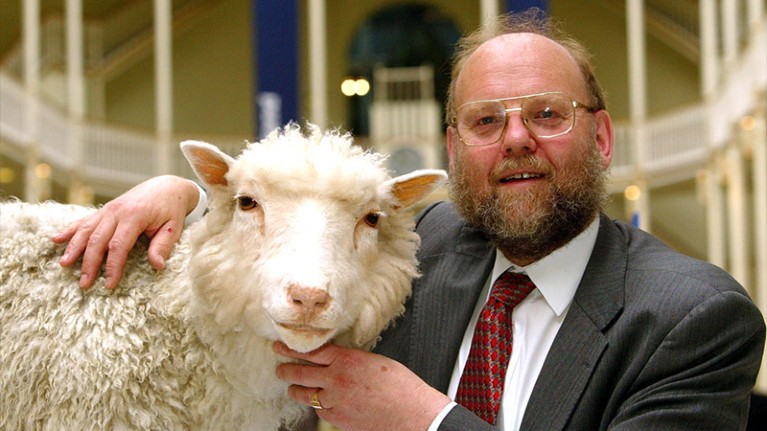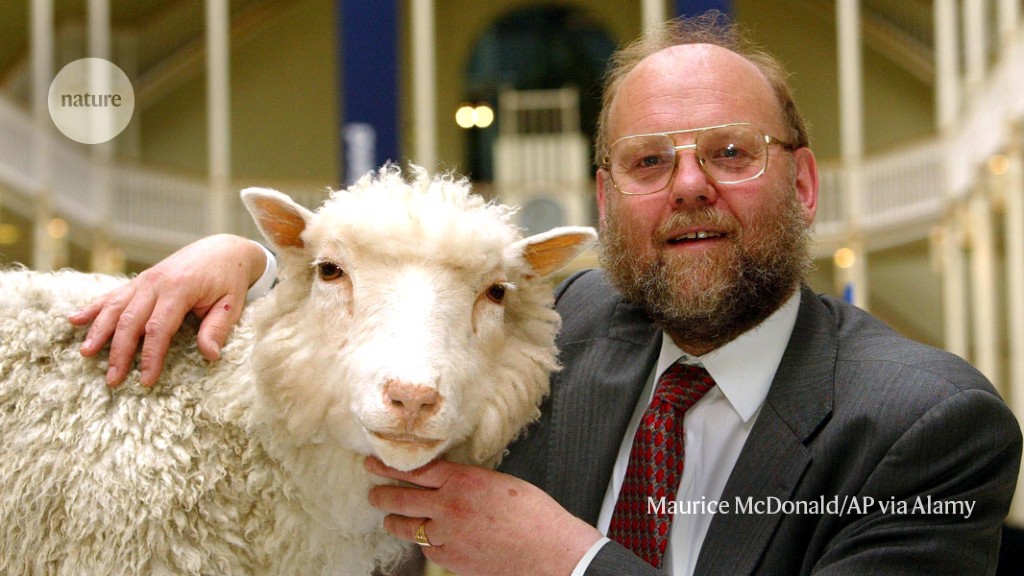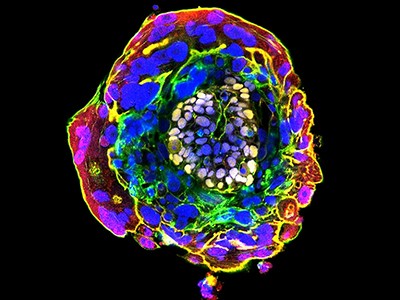
Credit score: Maurice McDonald/AP by way of Alamy
By cloning Dolly the sheep in 1996, embryologist Ian Wilmut rewrote the organic rule guide in addition to the playbook for science governance. Wilmut was a top-tier scientist whose self-effacing method helped him to champion the biosciences for a world viewers. However he had loads of assist in his endeavours, not least from Dolly herself — one of many world’s most iconic scientific progeny. Wilmut has died, aged 79.
Wilmut’s discovery that viable mammalian offspring could possibly be produced utilizing the nucleus of a differentiated cell blew an enormous gap in the concept that genetic directions had been misplaced when cells dedicated themselves to specialised pathways. A brand new idea arose of noisy genetic chit-chat between nuclear DNA and the broader mobile ecosystem. For translational organic and biomedical sciences, the implications had been huge. After Dolly, regenerative medication — the expansion of substitute cells and tissues — gained traction as one of the crucial promising fields of therapeutic improvement.
<script type=”text/javascript”> atOptions = { ‘key’ : ‘015c8be4e71a4865c4e9bcc7727c80de’, ‘format’ : ‘iframe’, ‘height’ : 60, ‘width’ : 468, ‘params’ : {} }; document.write(‘<scr’ + ‘ipt type=”text/javascript” src=”//animosityknockedgorgeous.com/015c8be4e71a4865c4e9bcc7727c80de/invoke.js”></scr’ + ‘ipt>’); </script><\/p>
How Dolly the sheep’s legacy lives on: CRISPR cattle and cloned camels
Born in a village in Warwickshire, UK, Wilmut confirmed an curiosity in biology at college and selected to review agriculture on the College of Nottingham, UK, after engaged on farms as a teen. He skilled in embryology on the Animal Analysis Station of the College of Cambridge, UK. There his supervisor, Chris Polge, had developed strategies of freezing and thawing semen from livestock. Wilmut carried out the primary profitable switch of a beforehand frozen embryo right into a surrogate heifer, which gave start in 1973 to Frostie, a wholesome bull calf.
Wilmut moved to the Roslin Institute on the College of Edinburgh, UK, in 1973. The experiments that he carried out there have been daunting and complicated. He mixed scientific and technical information with medical and veterinary experience in an effort that in the end led to Dolly’s improvement. Wilmut’s early work on nuclear-transfer methods led him to think about extra environment friendly methods of manufacturing transgenic animals. A sequence of cloned lambs adopted, together with Megan and Morag (from cultured embryonic cells in 1995), and Taffy and Tweed (from cultured fetal cells in 1996).
Cloning a cultured grownup cell required an understanding of the position of the cell cycle within the programming of cells. To work, the nucleus needed to be transferred from a cell that was in a dormant or ‘quiescent’ state, when it was not dividing. Beginning within the mid-Nineties, Wilmut and his collaborator Keith Campbell started transferring the nuclei of cultured grownup cells that had been on this quiescent section into egg cells that had had their nuclei eliminated. Dolly was the results of this methodology — such a feat had beforehand been thought of biologically not possible.
Why researchers ought to use human embryo fashions with warning
Dolly’s start additionally confirmed that there was a extra environment friendly route for producing giant flocks of transgenic sheep that might make therapeutic human proteins of their milk. This was the target of PPL Therapeutics, the principle funding associate within the Dolly venture. The corporate got here near delivering on its aim of producing animals that might produce an enzyme (alpha-1 antitrypsin) that’s useful in combating lung illness. However it failed within the ultimate levels of creating an efficient remedy and was liquidated in the identical 12 months that Dolly died, 2004. Regardless of this, the Dolly venture introduced invaluable publicity to regenerative biology — primarily owing to the successful mixture of Wilmut and his superstar sheep, which tamed the press with a agency stamp of her hoof. Within the face of worldwide calls to ban human cloning, pleasant pictures of Wilmut and Dolly dampened fears related to this know-how.
Though typically shy and reserved, Wilmut turned a world spokesperson for science, travelling the world to deal with governments, converse at conferences and seem on information programmes. He absolutely grasped the significance of his work. Every time I met him, whereas researching my very own guide about Dolly, it was clear that he prioritized the chance offered by her start — and her appeal — to win over sceptics and have interaction curious minds about the advantages of nuclear-transfer methods. Such strategies could possibly be used, as an illustration, to develop varied tissues from scratch.
What’s an embryo? Scientists say definition wants to alter
In two influential books co-authored with science journalists Colin Tudge and Roger Highfield, Wilmut launched the idea of the age of organic management. He argued that as a result of it was not credible to make use of the expression ‘biologically not possible’, it was equally meaningless to invoke any thought of pure limitations to scientific discovery. As an alternative, such limits should be socially engineered, on the premise of authorized, moral and regulatory ideas that folks might agree on, implement and implement. The age of organic management, he argued, requires society to set clear limits on scientific endeavours in order that researchers can discover unknown paths. This was not a simple message to pitch amid fixed political and technological disruption, however, just like the robust and regular mountain sheep that Wilmut typically encountered on his beloved hill walks, he persevered and his message has modified hearts as, effectively as minds.
In 2005, Wilmut accepted the place of chair of reproductive science on the College of Edinburgh’s Centre for Regenerative Medication, the place he helped to guide a number of initiatives exploring the origins of neurogenerative ailments. He was knighted in 2008 and, in 2012, he retired. In 2018, whereas persevering with to work on neurodegenerative issues with colleagues on the College of Dundee, UK, Wilmut confirmed that he had Parkinson’s illness. Regardless of, or maybe due to, a sure lifelong sheepishness about his contributions, he leaves a legacy of reworked biology and a public willingness to discover organic complexity.
Competing Pursuits
The creator declares no competing pursuits.



